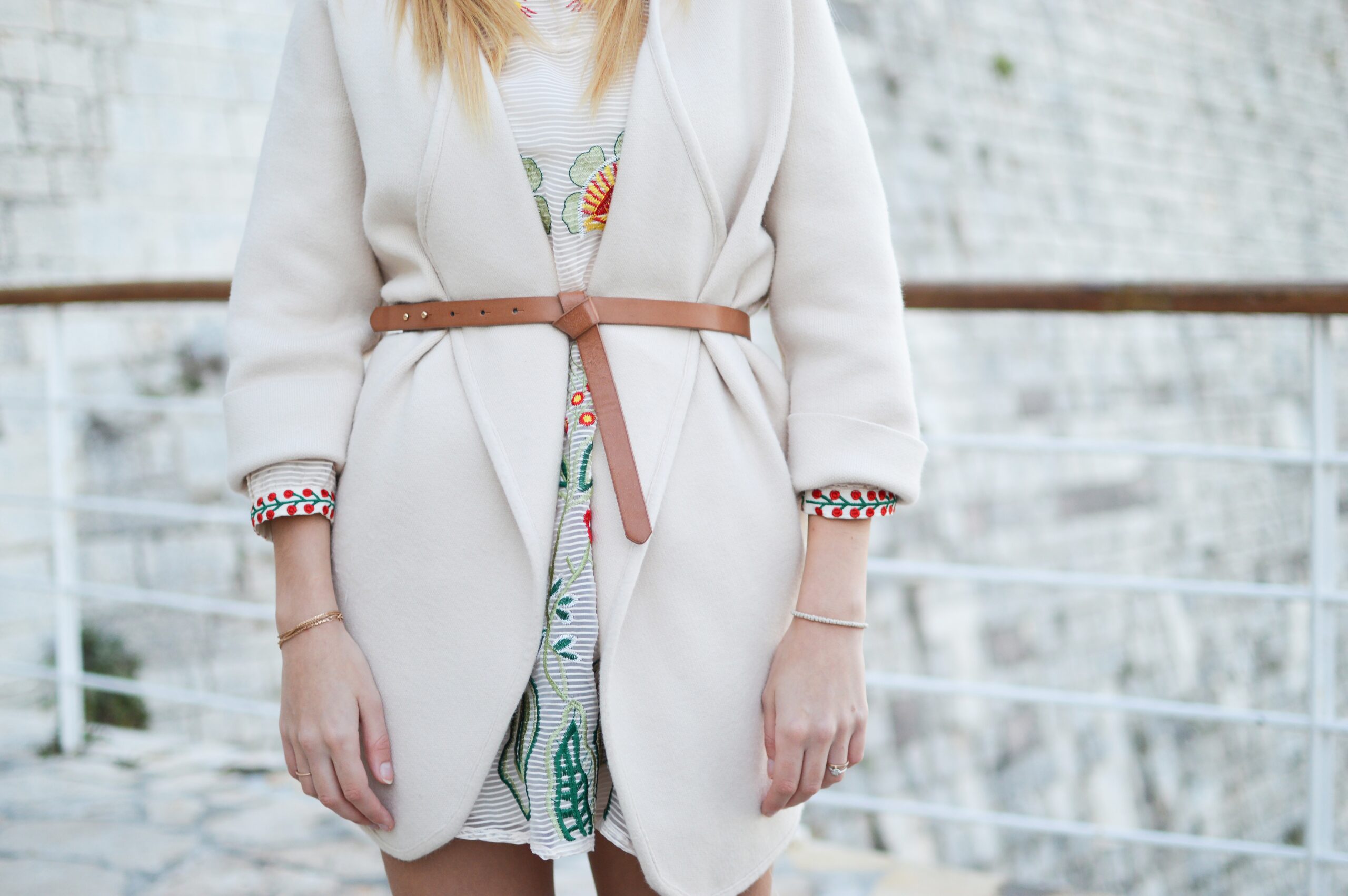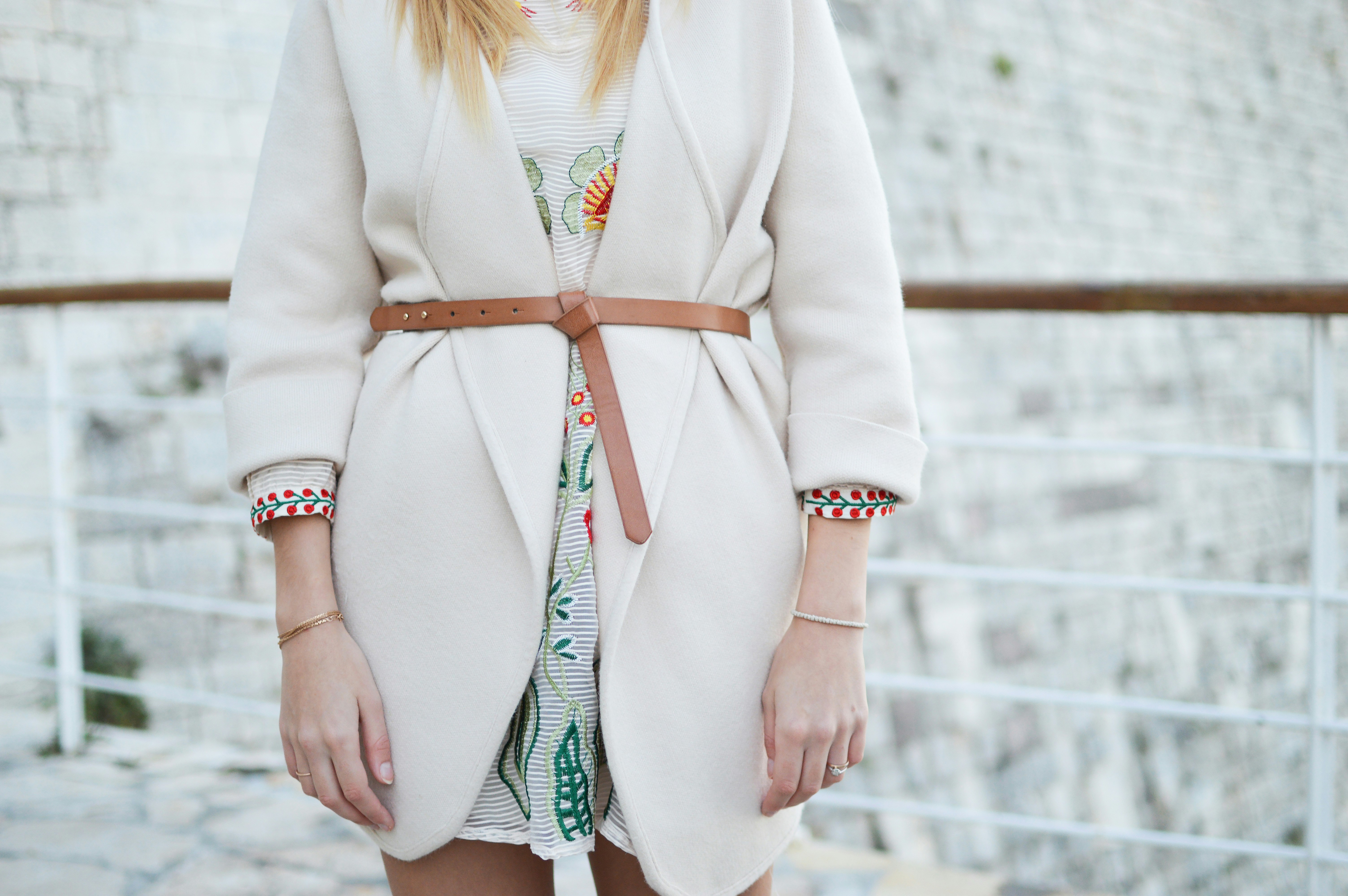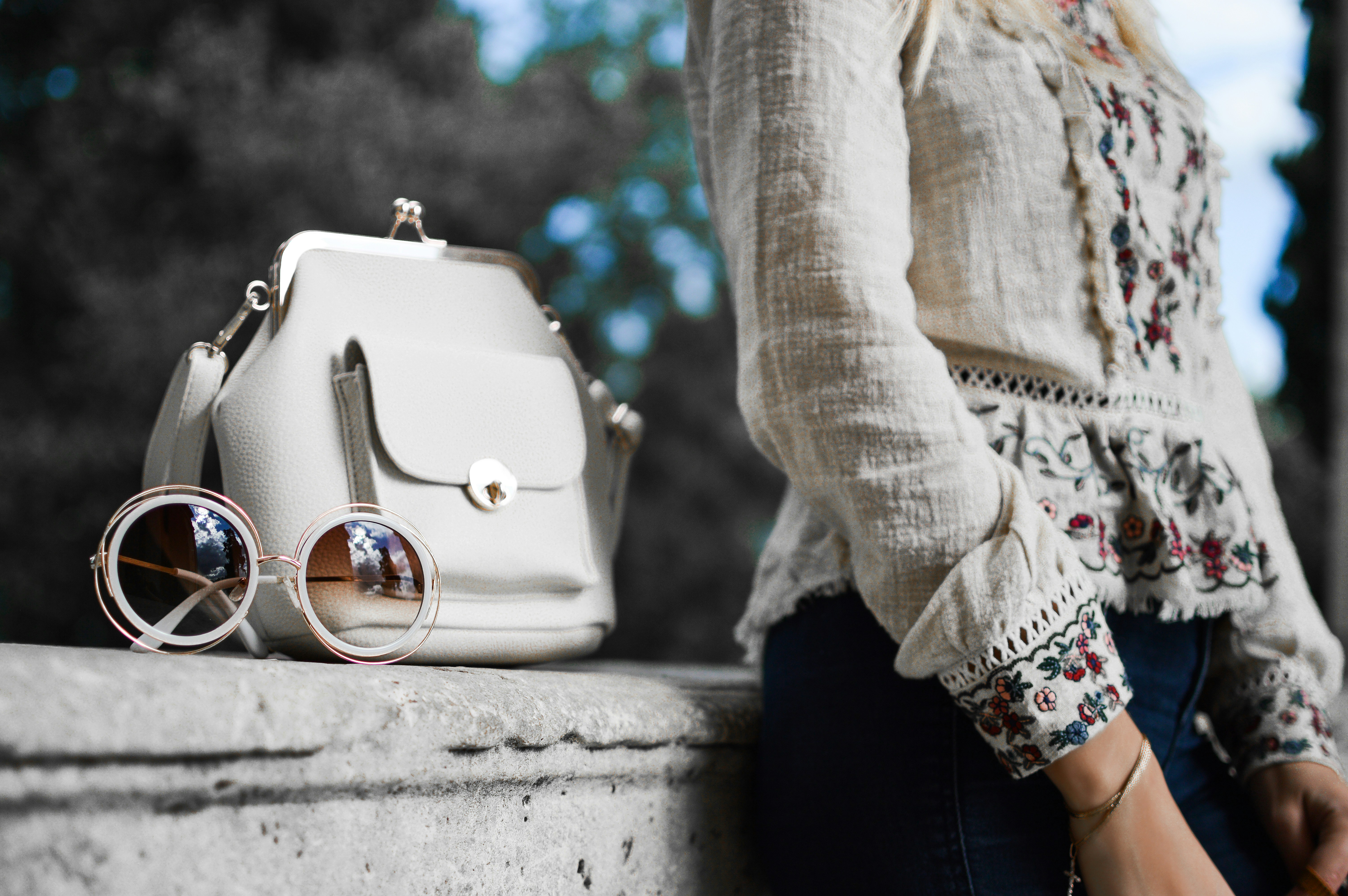Have you ever wondered if certain things are more suitable for specific seasons? The timing and context in which we experience certain activities, traditions, or even fashion trends can greatly influence our overall perception and enjoyment. Consider how a warm and cozy fireplace evokes a sense of comfort during chilly winter nights, or how vibrant flowers blooming in spring can uplift our spirits after a long winter. We often associate specific foods, festivities, and even moods with different seasons, adding depth and significance to our experiences throughout the year. Whether it’s the crisp air of autumn inspiring us to indulge in pumpkin spice everything or the carefree days of summer beckoning us to feel the sand between our toes, the cyclical nature of seasons can shape our preferences and create a dynamic tapestry of memories and emotions.
While there are no hard and fast rules governing what is suitable for each season, our human tendencies often guide us towards certain activities or preferences during specific times of the year. Exploring these nuances and observing how our surroundings, climate, and cultural traditions affect our choices can deepen our appreciation for the ever-changing tapestry of life. So, next time you find yourself engaging in a particular activity or embracing a specific tradition, ask yourself: “Is it more appropriate for certain seasons?” Perhaps you’ll uncover a newfound appreciation for the subtle ways in which our experiences intertwine with the rhythm of nature.
I. Historical Perspective
A. Origins of the Debate
The debate surrounding year-round fashion has roots that can be traced back to the early days of human civilization. As societies developed, clothing became more than just a means of protection from the elements. It became a form of self-expression, cultural identity, and social status. Different regions and climates led to the emergence of season-specific clothing styles, giving rise to the question – should fashion be dictated by the seasons, or is it more appropriate for certain seasons?
B. Key Players and Experiments
Throughout history, various individuals and fashion houses have played a pivotal role in shaping the perception of seasonal fashion. Designers and fashion trailblazers have experimented with styles that transcend the limitations of specific seasons, aiming to create versatile and adaptable clothing that can be worn year-round. These pioneers challenged the notion that fashion should be bound by the constraints of changing weather and cultural norms.
C. Early Findings
Early findings in the exploration of year-round fashion suggested that there were both advantages and disadvantages to breaking free from the seasonal fashion cycle. Some argued that a year-round approach to fashion offered increased versatility and adaptability, allowing individuals to express their personal style without being restricted by seasonal trends. Others, however, raised concerns about the economic implications and the importance of catering to regional and climate-specific needs.
II. Advantages of Year-Round Fashion
A. Versatility and Adaptability
One of the primary advantages of implementing a year-round fashion approach is the increased versatility it brings to our wardrobes. By investing in clothing that can be easily layered or accessorized, we can create a multitude of looks that seamlessly transition between seasons. This allows individuals to express their personal style in a more fluid and adaptable manner, without the need to overhaul their wardrobe with each change in temperature.
B. Fashion as Self-Expression
Fashion has long been recognized as a powerful form of self-expression. Adopting a year-round fashion mindset allows individuals to truly embrace their personal sense of style without being confined by seasonal trends. It encourages creativity and experimentation, enabling people to curate looks that reflect their individuality and personality. By breaking away from the traditional seasonal fashion norms, individuals are empowered to express themselves authentically throughout the year.
C. Economic Considerations
From an economic standpoint, year-round fashion can offer significant benefits. By investing in versatile pieces that can be worn throughout the year, individuals can build a more sustainable and cost-effective wardrobe. Instead of purchasing separate clothing items for each season, a carefully curated collection of multi-purpose garments can help reduce unnecessary spending and contribute to a more sustainable consumption pattern.
III. Seasonal Fashion: Relevance and Significance
A. Cultural and Regional Factors
Seasonal fashion holds great relevance and significance in various cultures and regions around the world. Traditional clothing styles often reflect cultural identities and values, with specific garments reserved for certain seasons or occasions. This adherence to seasonal fashion traditions helps preserve cultural heritage and fosters a sense of belonging within the community. It serves as a reminder of the unique customs and traditions that define different cultures.
B. Climate and Weather Implications
The climate and weather conditions in different regions heavily influence the necessity and practicality of seasonal fashion. Extreme temperature variations and distinct seasonal changes can require specific types of clothing to ensure comfort, protection, and overall well-being. Warm, cozy fabrics during colder months and lightweight, breathable materials during warmer months are essential elements of seasonal wardrobes. Adapting fashion choices to accommodate climatic variations is crucial for achieving both style and comfort.
C. Fashion Industry Influence
The fashion industry, as a driving force behind trends and consumer preferences, plays a significant role in shaping the perception and relevance of seasonal fashion. Designers, fashion houses, and retailers heavily rely on seasonal collections to capture the attention and interest of consumers. These seasonal cycles create anticipation and excitement, driving the demand for new fashion trends. Consequently, the fashion industry heavily influences consumer behavior and shapes the perception of what is fashionable each season.
IV. Spring and Summer Fashion Trends
A. Lightweight Fabrics and Breathability
Spring and summer are characterized by warmer temperatures, prompting a shift towards lighter fabrics that prioritize breathability and comfort. Airy materials such as linen, cotton, and chiffon are popular choices, as they allow for better airflow and help individuals stay cool in the heat. The use of lightweight fabrics not only adds a touch of elegance and effortlessness to outfits but also ensures practicality in warmer climates.
B. Bright Colors and Floral Patterns
Spring and summer fashion trends are often synonymous with vibrant colors and floral patterns. These cheerful motifs capture the essence of the seasons, reflecting the blooming flowers and sunny days. Bright hues and bold floral prints inject joy and positive energy into outfits, allowing individuals to embrace the lively spirit of spring and summer. These colors and patterns can be incorporated into various clothing items and accessories, transforming any ensemble into a celebration of the seasons.
C. Trending Accessories
Accessories play a crucial role in completing and elevating any outfit, and spring and summer fashion trends introduce new exciting accessory options. Wide-brimmed hats, oversized sunglasses, and straw bags are popular choices for adding a touch of sophistication and functionality to warm-weather looks. Delicate jewelry pieces, such as stackable rings and layered necklaces, provide a subtle yet stylish way to enhance outfits without overpowering their overall vibe.
V. Fall and Winter Fashion Trends
A. Layering and Textures
Fall and winter fashion trends revolve around layering and experimenting with different textures. As the temperatures drop, individuals often bundle up in cozy fabrics such as wool, cashmere, and faux fur. Layering enables individuals to create visually interesting outfits while also providing practicality in colder weather. Combining various garments, such as sweaters, scarves, and jackets, adds depth and dimension to ensembles, exuding a sense of warmth and style.
B. Neutral Tones and Cozy Knits
Fall and winter fashion often embrace the beauty of earthy and neutral tones. Shades such as camel, burgundy, and olive green complement the changing colors of nature and create a sense of harmony with the surroundings. Cozy knits, like oversized sweaters and cable-knit cardigans, become wardrobe staples, offering comfort and style simultaneously. These textures and colors combine to create outfits that exude elegance and coziness during the colder months.
C. Must-Have Cold-Weather Accessories
Winter fashion trends bring forth a variety of cold-weather accessories that serve both style and function. Chunky scarves, gloves, and beanies not only keep individuals warm but also add a touch of flair to winter outfits. Faux fur accents and sturdy boots provide both comfort and style, ensuring individuals can navigate through snowy streets while making a fashion statement. These accessories allow individuals to embrace the cozy and magical ambiance of winter while staying fashionable.
VI. Transitional Fashion: Bridging the Seasons
A. Mixing Clothing from Different Seasons
Transitional fashion involves combining clothing items typically associated with different seasons, effectively bridging the gap between changing weather conditions. Layering summer dresses with lightweight cardigans or pairing skirts with tights and boots enables individuals to create outfits suitable for early spring or late fall. By mixing garments from different seasons, one can maximize the versatility of their wardrobe and effortlessly adapt to fluctuating weather patterns.
B. Utilizing Layering Techniques
Layering is a key technique utilized in transitional fashion to accommodate varying temperatures throughout the day. It involves adding or removing layers as necessary to ensure comfort and style. For instance, in spring, a lightweight blouse worn under a blazer can be paired with trousers, providing the flexibility to remove or add layers depending on the temperature. Layering not only adds visual interest to outfits but also allows for easy adaptation to changing weather conditions.
C. Style Tips for Seasonal Transitions
When transitioning between seasons, outfit coordination becomes essential. Opting for a mix of clothing items that can be easily layered, such as a versatile trench coat or a lightweight sweater, creates a seamless transition from one season to another. Mixing textures, embracing neutral colors, and incorporating accessories can help add depth and interest to transitional outfits. By following these style tips, individuals can confidently navigate the ever-changing weather while maintaining their fashion-forward image.

VII. Environmental Considerations
A. Sustainable Fashion Practices
In recent years, there has been a growing awareness and concern regarding the environmental impact of the fashion industry. Sustainable fashion practices aim to minimize the industry’s ecological footprint through initiatives such as using organic materials, implementing ethical production processes, and reducing waste. Embracing year-round fashion with a focus on high-quality, timeless garments that can be worn across seasons aligns with sustainability goals by promoting longevity and reducing the need for excessive consumption.
B. Ethical Production and Consumption
Ethical considerations are increasingly becoming an important factor in the fashion industry. By choosing brands that prioritize fair labor practices, safe working conditions, and fair wages, individuals can contribute to more ethical production and consumption patterns. Supporting fashion labels that prioritize the welfare of workers and utilize sustainable materials helps promote a more conscious and responsible fashion ecosystem.
C. Impact on Climate Change
The seasonal fashion cycle, characterized by frequent turnover of trends and fast fashion production, can contribute to climate change through resource depletion, increased greenhouse gas emissions, and waste generation. By adopting a year-round fashion approach with a focus on timeless and versatile pieces, individuals can actively reduce their carbon footprint and contribute to mitigating the environmental impact of the fashion industry. Making conscious choices regarding clothing consumption can play a significant role in shaping a more sustainable future.
VIII. Fashion Industry Perspectives
A. Designer Insights
From a designer’s perspective, the allure of seasonal collections lies in the ability to showcase their creativity and vision aligned with the changing seasons. However, some designers are also exploring the concept of trans-seasonal designs, recognizing the demand for versatile and adaptable clothing. The fashion industry is evolving to cater to the needs and desires of consumers who seek clothing that can effortlessly transition between seasons, blurring the lines between traditional seasonal boundaries.
B. Retailer Strategies
Retailers play a crucial role in shaping consumer choices and trends. Many retailers have embraced the concept of a year-round fashion approach by curating collections that incorporate both classic and seasonal pieces. This strategy allows individuals to build a wardrobe that combines timeless staples with trendier items, catering to both individual style preferences and the desire to stay fashionable throughout the year. Retailers are increasingly prioritizing sustainability and ethical practices, aligning their strategies with the evolving values of consumers.
C. Consumer Behavior Analysis
Consumer behavior surrounding fashion choices is evolving, influenced by factors such as sustainability concerns, personal style preferences, and the desire for versatility. Individuals are increasingly seeking fashion options that not only reflect their personal style but also align with their values and lifestyle. The rise of conscious consumerism has led to a shift in demand towards sustainable and timeless clothing, creating opportunities for the fashion industry to adapt and provide more year-round fashion options.
IX. Personal Style: Navigating Fashion Choices
A. Understanding Your Fashion Preferences
Navigating fashion choices ultimately begins with understanding your personal style preferences. By considering your lifestyle, preferences, and body shape, you can develop a fashion blueprint that guides your clothing choices. Understanding the colors, silhouettes, and patterns that resonate with you will help you curate a wardrobe that reflects your individuality and boosts your confidence.
B. Adapting Trends to Suit Individual Style
While trends can be enticing, it’s crucial to adapt them to suit your personal style rather than blindly following every passing fad. Take inspiration from trends and incorporate elements that resonate with you, creating a unique and personalized interpretation. By infusing your individual style into current trends, you can create looks that truly reflect your personality and set you apart from the crowd.
C. Building a Seasonal Wardrobe
Building a seasonal wardrobe involves striking a balance between classic, timeless pieces and trendier seasonal items. By investing in versatile and adaptable garments that can be mixed and matched, you can create a range of outfits suitable for different seasons. Selecting key pieces such as outerwear, shoes, and accessories that can effortlessly transition between seasons ensures that your wardrobe remains functional and fashionable year-round.
X. Conclusion
A. Summary of Findings
The debate on whether fashion should be dictated by seasons or year-round has given rise to a multifaceted discussion. While both approaches have their merits, it becomes apparent that a combination of the two is the ideal solution. Embracing year-round fashion offers increased versatility, adaptability, and creative expression, allowing individuals to curate wardrobes that transcend seasonal boundaries. However, the cultural, regional, and climatic factors associated with seasonal fashion remain significant and should be respected and celebrated.
B. Contemplating Fashion Choices
Contemplating fashion choices involves a delicate balance between personal style preferences, trends, and practical considerations. By understanding your fashion preferences, adapting trends to suit your style, and considering the relevance of seasonal fashion, you can make thoughtful and conscious fashion choices that align with your values, lifestyle, and the climate you inhabit.
C. Embracing Versatility
In conclusion, embracing versatility in fashion allows us to break free from the limitations imposed by traditional seasonal boundaries. By curating a wardrobe that combines timeless staples with trendier pieces, informed by personal style preferences and sustainability considerations, individuals can navigate the world of fashion with confidence and authenticity throughout the year. Let your fashion choices be a reflection of your true self, embracing the power of clothing to express your individuality and adapt to the ever-changing seasons of life.





